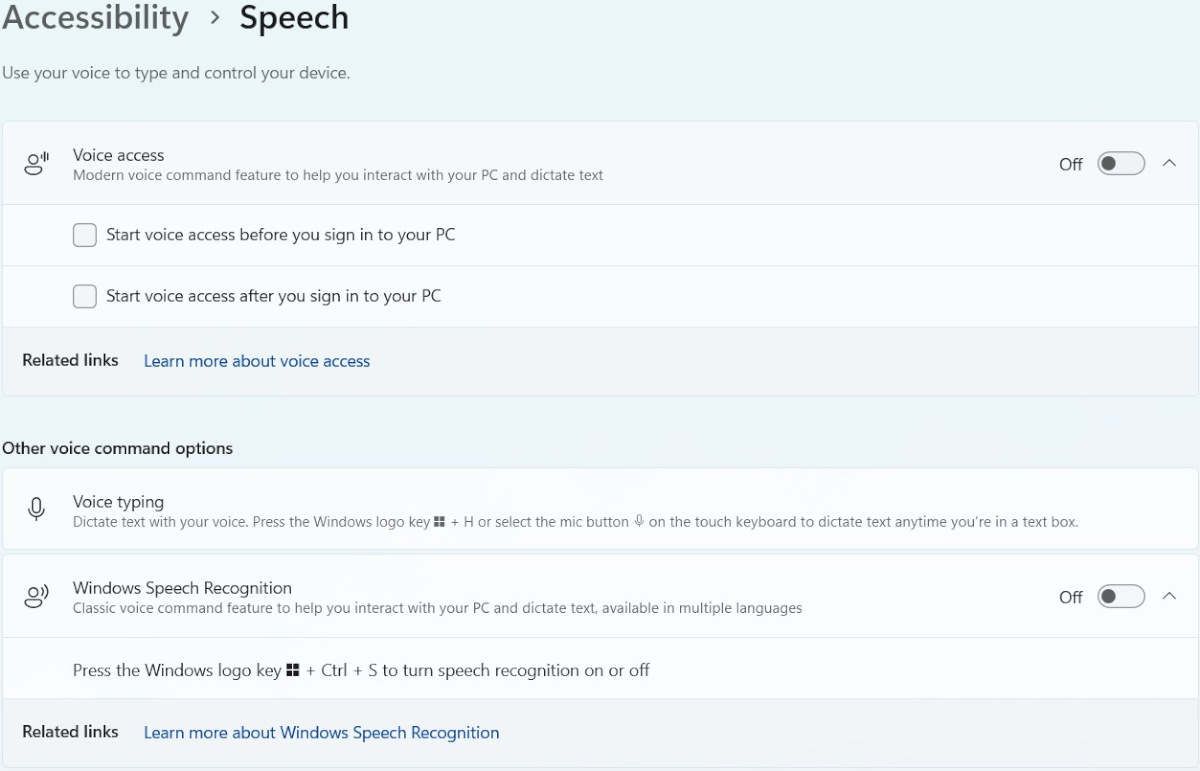The last Windows 11 Insider update for the year has finally arrived. This particular release says goodbye to Windows Speech Recognition. In its stead, Windows Insiders Build 23606 introduces a new assistive technology called Voice Access. Let’s dig in.
WSR is an age-old voice recognition software that dates back to Windows Vista. It is a handy little assistive feature that enables voice commands for complete control of a Windows 11 PC. Users can dictate text in documents and email, navigate websites, perform keyboard shortcuts, and enjoy limited control of the mouse cursor, among other things. Understandably, this is a highly valued ability for those with physical impediments.
Consider Voice Access as a new-and-improved successor of WSR. It works very much the same way as before, in that it assists users with control of their computer through voice command, without the need to connect to the Internet. Microsoft says this new speech recognition will support multiple languages and feature even more custom commands.
If you are an Insider, then this is the first release that deprecates WSR and prevents you from accessing it. Users will be greeted with a “ending support” dialogue box that will prompt you to try Voice Access instead. A notification has also been added under the Speech tab in Settings. Besides this major change, there are a bunch of other fixes added to the update which you can go through here.

Of course, this doesn’t mean that WSR is unavailable for regular users. In fact, WSR will only be phased out once all the bugs and glitches get ironed out in this Insider / Developer phase. However, Voice Access is currently available for regular users alongside the option for WSR. Simply head over to Settings, Accessibility, Speech, and toggle Voice Access. Neat.

